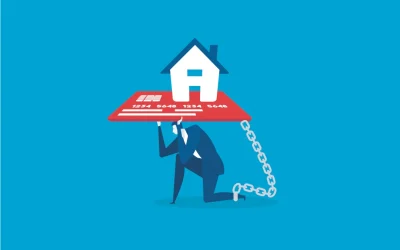All business owners and financial managers have a duty to maintain expenses in order to maximize profits. Reviewing vendor contracts and fees on at least an annual basis ensures that organizations are receiving not only promised contract rates but also keeps vendors on their toes! One service that these financial professionals can review is their merchant service solutions better known as credit card processing. Indeed, payment processing fees are the angst of many businesses, governmental entities, non-profits so it’s understandable how these financial professionals can be enticed by “free” credit card processing. Depending on their industry, this could mean as much as a 3% increase to their bottom line! These are known as Cash Discount Programs (CDP).
A CDP is a method in which merchants pass the cost of card acceptance along to cardholders. The merchant entices their customers to pay with cash by 1) offering as much as a 5% discount for cash transactions and 2) raising the price of their goods or services by adding a service fee for all credit/debit card transactions. Signage or receipt disclosures are posted to inform their customers of the fee structure. In short, merchants are charging their customers for utilizing their credit/debit cards. What could possibly go wrong?
Consumers utilize credit and debit cards 3 times more than they use cash. Fewer and fewer people in fact carry cash at all! These customers may view service fees for credit/debit card purchases as an unfair penalty and not make a purchase, period. Additionally, there have been multiple studies that show that consumers spend more when using cards. With cash, a customer is limited to the amount in their wallet so even with a 5% discount for cash, the overall sales volume is going to be less than with cards. Merchants should be aware that managing payment processing fees by passing them along to customers is risky. Once a customer realizes that they are shouldering the burden of a typical business expense they may choose to shop elsewhere. It is also important to note that eCommerce sites without a physical, brick-and-mortar location cannot participate in any type of CDP.
To offer a CDP the law stipulates what’s known as “conspicuous signage” throughout a place of business, on the website, on an actual receipt—These are the rules of the actual card brands. The notification reads in part that customers will receive a discount if they make a purchase with cash or a gift card. The receipts must clearly reflect that there was a service charge on items purchased and that the service charge was removed for a cash payment. Likewise, credit/debit card receipts must itemize the processing fee imposed. This means updating point-of-sales hardware and/or software.
Federal and state governments have already taken action against predatory fees for payment processing. In 2011 Congress passed the Durbin Amendment which limited the fees that could be charged with respect to regulated debit card transactions. Adding a service fee to these transactions can become highly questionable. Eleven states — California, Colorado, Connecticut, Florida, Kansas, Maine, Massachusetts, New York, Oklahoma, Texas (and Puerto Rico) — have laws that prohibit surcharging. Minnesota also limits surcharging and is very specific in its criteria. Many more states are considering banning the practice as well as it is most harmful to those at the lowest rungs of our society.
Perhaps the clearest argument against CDP’s are that payment processing fees go from being a business expense to revenue—most of which actually goes to the processor. Payment processing reps who aggressively sell these programs typically do so with a nice discount rate which they earn from the account. The sales pitch is, “Don’t worry about the fees because the customer is paying for them.” A merchant is no longer able to deduct these fees on their tax returns and pays tax for fees that the processor collects! Many of these contracts have effective rates as high as 4%. Hardly a win-win.
Payment processing accounts should be evaluated and managed as any other vendor product or service. Merchants should:
- Understand payment processing fees—What items can a merchant negotiate and what items are standard?
- Read the monthly statements and verify that contract rates are indeed being applied—Don’t wait until the end of the year to evaluate fees and performance
- Don’t sign with a new processor until ALL fees are discussed and understood—Remember, anyone can promise anything walking through the door!
Payment processing is simply a cost of doing business. Savvy business owners and financial managers make it a priority to understand payment processing fees, evaluate a TRUE apples-to-apples comparison and ask questions prior to signing a contract. Nothing should be left to chance and if something sounds too good to be true — Zero, Zip, Zilch — it most likely is!




0 Comments